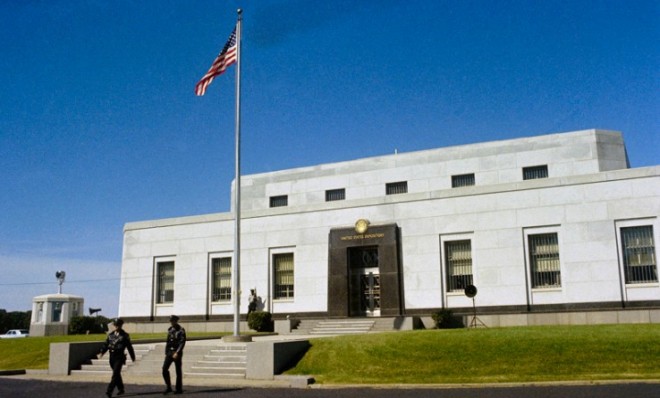5 non-gold treasures stored at Fort Knox
Think Fort Knox is just for gold? Well, that's a lot of bullion. Here are five more items that have been stored in the vault


1. The Magna Carta
The Magna Carta has traveled the world, and one of its four known copies spent a long layover in Fort Knox during World War II. Its original American destination: The British Pavilion at the 1939 New York World's Fair. When World War II erupted a few months later, the document was sent to the vault for safekeeping. It was a Fort Knox life for the Magna Carta until 1947, when it was returned to Lincoln Cathedral.
2. & 3. The Constitution and the Declaration of Independence
The Week
Escape your echo chamber. Get the facts behind the news, plus analysis from multiple perspectives.

Sign up for The Week's Free Newsletters
From our morning news briefing to a weekly Good News Newsletter, get the best of The Week delivered directly to your inbox.
From our morning news briefing to a weekly Good News Newsletter, get the best of The Week delivered directly to your inbox.
The Magna Carta wasn't the only historical document hanging out among the gold bars during World War II. It was in good, American company — with the original Constitution and Declaration of Independence. The papers were moved from Washington, D.C. to Fort Knox two weeks after the attack on Pearl Harbor. But don't picture them in a museum display. They were kept under lock and key... and sealed with lead... and placed in another protective container. All told, the documents were kept safe by some 150 pounds of gear, not to mention the fact that they were in Fort Knox. They returned to D.C. in 1944.
4. The Holy Crown of Hungary
Sure, it's made of gold, pearls, and other jewels. But back in the day, the Holy Crown of Hungary (also known as the Crown of Saint Stephen) was also thought to be divine. Hungarian King Coloman the Book Lover, who reigned from 1095 to 1116, wrote that the Holy Crown, not the king, was the true leader of the country. That's a lot of power for a piece of bling! Important as it is, the Holy Crown's been stolen, lost, and found throughout history. At the end of World War II in 1945, the U.S. 86th Infantry Division recovered the crown in Mattsee, Austria. When it was returned to the Hungarian Crown Guard, the unit considered the threat of the Soviet Union. So guess what happened? Yep, the Holy Crown was sent to Fort Knox for the duration of the Cold War. It stayed there and got the royal security treatment until 1978.
5. Tons of morphine and opium
A free daily email with the biggest news stories of the day – and the best features from TheWeek.com
Among all the gold in Fort Knox is a cache of morphine and opium worth millions. And no, these were not recovered during the War on Drugs. Instead, they were stored back in 1955 in preparation for the Cold War. The U.S. military wanted to be sure to have enough emergency painkillers in the event that our access to foreign opium sources was cut off. The tricky part: What to do with all these drugs we don't need anymore. Selling all the remaining morphine could've depressed the domestic market, so the U.S. spent millions refining the old opium into morphine sulphate in 1993. It's still locked up, just like you'd be if you got caught with that many drugs.
More from Mental Floss...
* When did Americans lose their British accents?
-
 How weight-loss jabs are changing the way we eat
How weight-loss jabs are changing the way we eatIn The Spotlight Anti-obesity drugs have been a boon for Babybel but are supermarkets ready for a slimmed-down Christmas?
-
 Sudoku hard: December 18, 2025
Sudoku hard: December 18, 2025The daily hard sudoku puzzle from The Week
-
 Crossword: December 18, 2025
Crossword: December 18, 2025The daily crossword from The Week